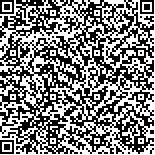下载中心
优秀审稿专家
优秀论文
相关链接
摘要

地表温度LST(Land Surface Temperature)是城市热环境研究的重要参数之一,城市下垫面极为复杂,LST空间差异性较高。高空间分辨率LST对精细化城市热环境监测和缓解具有重要意义。目前大部分城市遥感LST降尺度研究仍以二维角度为主,缺乏建筑三维结构的考虑。本研究同时考虑地表二维和三维指标,构建基于随机森林方法的降尺度模型,开展MODIS 1 km LST降尺度研究(100 m),并探讨二维和三维建筑形态对LST影响的空间尺度效应。另外,为了弥补随机森林模型缺乏物理基础的不足,参考热辐射传输方程,将方程中传感器接收的辐亮度和与大气透过率相关的大气可降水量,加入降尺度模型构建中。为了更好利用真实观测的MODIS 1 km LST验证降尺度结果,故将MODIS LST和所有指标因子升尺度至5 km,开展5 km LST降尺度至1 km研究,进一步研究探讨大气顶层辐亮度和大气可降水量对LST降尺度的影响。研究结果表明:(1)随机森林模型中增加辐亮度和大气可降水量前后,通过将5 km LST降尺度后1 km LST与原始MODIS 1 km LST相比,RMSE和R2分别由3.1 K和0.5提高至0.38 K和0.94。(2)当随机森林模型中增加建筑形态指标后,模型的袋外分数OOB_score由0.46提高至0.49,模拟的100 m LST与ASTER LST产品比较,R2有所降低,可能的原因是ASTER 和MODIS LST的反演方法和传感器不同,造成两者在100 m尺度下的对比性差一些。但是当驱动因子中增加MOD02和MOD05后,RMSE和R2由2.4 K和0.29提高至1.2 K和0.68,进一步说明MOD02和MOD05在1 km LST降至100 m过程中,起到至关重要作用。(3)在1 km和100 m尺度下,增加建筑形态后,模型OOB_score均有提高,并且建筑形态指标的重要性有所不同,在100 m尺度下独立建筑形态的影响程度有所增加。综上,MODIS LST在城市地区降尺度研究中需要考虑大气顶层辐亮度、大气可降水量和建筑形态的影响,并且不同的建筑形态对LST的重要性存在空间尺度效应。
Land Surface Temperature (LST) is one of important variables for urban thermal environment studies. Urban surface is extremely complex and LST is heterogenous. High spatial resolution of LST is helpful for fine urban thermal environment monitoring and mitigation. However, so far, as we know, mostly LST downscaling studies focus on two-dimensional scope, and lack of building three-dimensional (3D) structure impact on LST. This study will use random forest model (RF) with both 2D and 3D land surface indices for downscaling of MODISF 1 km LST to 100m. Meanwhile, the spatial scale issues of building 3D morphology on LST is also discussed. In addition, in order to make up for the lack of theoretical basis of RF model, this study added more parameters during RF downscaling model generation based on the thermal radiation transmission equation, e.g. land surface radiance (MOD02) and precipitable water vapor (PWV, MOD05).The results show: (1) When MOD02 and MOD05 are included in RF model, RMSE and R2 between simulated 1 km LST and MODIS LST product are improved from 3.1 K and 0.5 to 0.38 K and 0.94. (2) When building 3D morphology is included in RF model, the OOB_score improves from 0.46 to 0.49. The R2 between simulated 100m LST and ASTER LST product is slightly decreased, one of the reasons is that LST retrieval methods of MODIS and ASTER are different and the two sensors are also different. However, when MOD02 and MOD05 are included, RMSE and R2 improve from 2.4 K and 0.29 to 1.2 K and 0.68. (3) The OOB_scores with building morphologies improve at both 1 km and 100 m scale, and the importance of building morphologies are different. Above all, downscaling MODIS LST in urban area should consider land surface radiance, PWV and building 3D structure indices, and impact of building morphologies on LST are different at different spatial scale.

